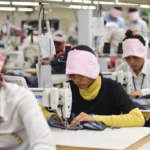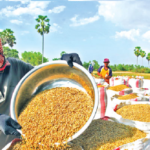CAMBODIA has suspended all white rice and padi exports starting April 5 to secure domestic supplies during the Covid-19 pandemic.
Prime Minister Hun Sen said the measure was a preventive strategy that was important during an emergency, as Covid-19 was spreading in many countries, including Cambodia.
According to the Phnom Penh Post, he said the decision to suspend padi and white rice exports would ensure better padi stockpiles in the country.
However, the export of fragrant rice, which has less local demand, is still allowed.
“We have to keep food in our country. . . I am not referring to cassava, potatoes, corn or soybeans, but only to rice.”
On the deadline to stop exports, Hun Sen said the government would allow traders and others who have already bought padi and were ready to export to Thailand and Vietnam to do so.
He also told the Economy and Finance Ministry to look into the possibility of disbursing funds to millers to buy padi from those who had sold it to traders in neighbouring countries.
Cambodian Rice Federation (CRF) vice-president Chan Sokheang told The Post that the government’s measures to suspend exports of white rice and padi would help Cambodia maintain a strong stockpile.
This, he said, was especially so under the circumstances when many countries around the world were facing problems stemming from the spread of Covid-19.
However, the suspension of white rice exports had also affected orders from some countries, he said.
“This is a situation we call force majeure so some order agreements will be waived.”
Sokheang said on average, white rice accounted for about 20 per cent of rice exports, while that for fragrant rice stood at 80 per cent.
Last year, Cambodian rice exports were worth about US$501 million — down 4.3 per cent from US$524 million in 2018, a CRF report said.
Sokheang called on the ministry to increase funding so that rice buyers and rice millers could buy more padi to stock up.
According to data from the Agriculture, Forestry and Fisheries Ministry, Cambodia had exported 214,612 tonnes of rice up to March 25.
China accounted for 94,060 tonnes, European Union (62,998 tonnes), Asean countries (27,937 tonnes), and other destinations (29,617 tonnes).
Padi exports to Vietnam were 836,692 tonnes.
Last year, rice exports reached 620,106 tonnes, down 0.97 per cent from 2018’s 626,225 tonnes.
Data showed that exports to China accounted for 40.73 per cent or 248,105 tonnes, and the European market was 32.01 per cent, or 202,990 tonnes.
Exports to Asean countries accounted for 13.41 per cent or 83,164 tonnes, and other destinations at (13.84 per cent) or 85,847 tonnes.
Source: New Straits Times







